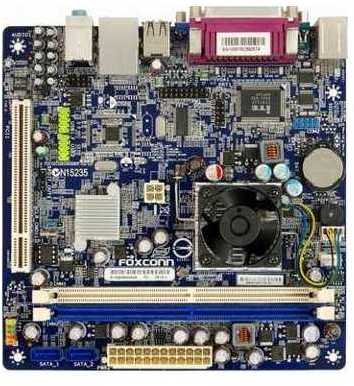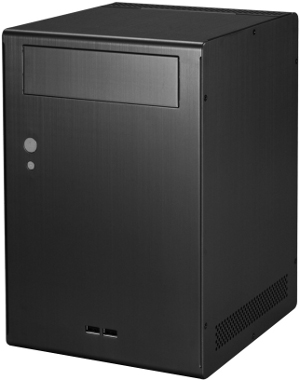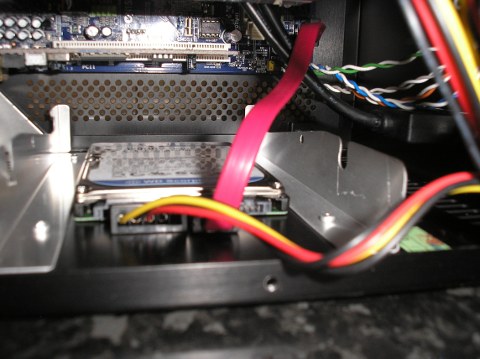Building a mini-ITX server for home use
February 26, 2010
FOR some time after I obtained and set up the Cobalt 3 to run as my home server, I never considered getting another one. The Cobalt 3 has enough space, plenty of RAM and the processor was fast enough for my limited needs.
But after some time, it became apparent to me that there needed to be some form of support for a specialist platform - Debian GNU/Linux, which I run on all my PCs and servers, has no distribution catering to the Cobalt 3 and hence, given that I am no programmer, I was dependent on other enthusiasts for upgrades of things like the kernel.

The more I thought about it, the more arguments arose in my head for a stock standard x86 box. But I didn't want to go the old route of getting a tower; the mini-ITX form-factor appealed to me as it would not be much larger than my Cobalt servers which I have used for the last five years, first the Cobalt 2 and then the Cobalt 3.
Sourcing parts for a mini-ITX box when one resides in Melbourne is difficult. All those who sell components for mini-ITX boxes are based in Sydney and thus one has to buy unseen. If the components I was looking for were similar to parts I have bought over the last 10 years, I would have had no qualms. But finally I had to take the plunge.
After scouring the web, I finally plumped for the AusPC Market - they had a range of both cases and motherboards and the prices were reasonable. Shipping time was not unduly long and costs were affordable.
I chose the Foxconn D51S motherboard and the Lian Li PC-Q07B case. The former comes with a Intel Atom dual-core D510 processor on board which supports hyper-threading and has an integrated memory controller.
The board is based on the Intel GM10 chipset which does not cater for a PCI-e bus but I only needed an additional network card and the one PCI expansion slot on board was enough for me; I needed two LAN spots and all the dual-LAN boards were well in excess of $300. The D51S cost $140.80, inclusive of the freight from Sydney to Melbourne.

The board does not have IDE or floppy controllers but there are two SATA-II slots and SATA cables are provided as well; one is much shorter than the other, the manufacturer having assumed that one will only use the board in a mini-ITX case.
The board has four USB ports on the back and offers two more for the front of the case. There is six-channel audio and a SPDIF connector is available on the board if one chooses to use the board to build a media server.
The Lian Li case is very nicely built but the internals are a bit wanting. It does not have its own power supply so I had to buy a regulation power supply and it is really too big for a little box such as this.
The case measures 193 mm (length) by 208 mm (width) by 280 mm (height). It is made of aluminium and weighs around 1.1 kg. It can take a 5.25 drive; if that is not used then one is supposed to be able to fit in both a 3.5" and a 2.5" HDD.
The case has two USB ports on the front and the on-off and reset switches are designed very neatly. It has provision at the back for one add-on PCI card. The side panels are removable and the screws that hold them on couldn't be more unobtrusive.
The case can be fitted with one 3.5" drive; one has to use four screws with rubber washers - to avoid vibration - and then slide it in. No screwdriver needed. The fact that the 2.5" drive sits directly on the floor of the case doesn't exactly offer one much comfort (see pic below). And you need pretty nimble fingers to attach the SATA cables to the 2.5" drive after it is fitted on the case.
The case gets pretty crowded due to the fact that all the regulation connectors from the power supply are unused. I only needed one SATA drive as I do my backups externally. If both drive slots are used, it will be quite crowded and one will probably need to put in a case fan.

But apart from these minor annoyances, the case is well worth the cost – $106.70, including the freight. The PSU cost $30 and I needed to buy a network card and two sticks of RAM.
Installing Debian was easy as I have been using the distribution for more than 10 years. The processor is very fast and everything went very smoothly.
Configuring things took a bit of time as I had to back-up the MySQL database from the old server and restoring that was held up until I could get some help from my guru, Peter Giorgilli.
The server runs postfix, bind, apache and wordpress, apart from acting as a router for the house. The modem I use is in bridged mode and the server does the job of managing the internet connection.
The configuration took time because a lot of the software I use had version changes and as a result changes in config options.
Contact me (remove the nospam before emailing).
previous next